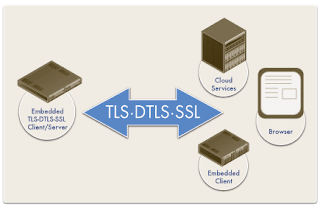Approaches to a Security Framework
I'm going
to give you a quick run down of several different standardized
methodologies for reaching a security framework as relate to
information security governance.
COBIT:
It stands for Control Objectives for Information and related
Technology. It's a set of best practices or a framework for
Information Technology Management. It was created by ISACA and the
IT Governance Institute (ITGI) back in the early nineties. COBIT
gives us, it's a way for managers, IT users, IT supervisors,
technicians and auditors, a framework of generally accepted
practices, measurements and indicators to help us maximize the
benefits derived to the use of information technology.
CMM –
Capability Maturity Model: It's also referred to sometimes as the
Software CMM or SWCMM. CMM is a process capability model that it's
really based on software development processes and practices. CMM
officially is not used anymore, it was retired in 1997 but it's been
updated by CMMI which is Capability Maturity Model Integration and
it's been used by many organizations to help them to understand the
process capability maturity organization in a wide range of areas
including software engineering, risk management, project management,
information technology, system engineering or personal management.
Balanced
Scorecard: It's a concept for measuring if activities of a
company are actually meeting their objectives and determine the
overall strategies and the overall mission and vision. It focus on
the financial outcomes but also it looks the human issues. The
balanced scorecard provides a comprehensive view of the business, not
just for a financial standpoint but it also help the organization
really improves the long term planning, it helps to meet their long
term goals.
SABSA:
The Sherwood Applied Business Security Architecture is a methodology
for enterprise security architectures and service management. It
basically develops risk-driven enterprise information security
architectures for delivering security infrastructures solutions that
support critical business initiatives. The primary characteristic is
that everything has to be derived for an analysis of the business
requirements of security. Therefore, it's totally security driven.
ISO
27002: It's a growing family of standards for information
security published by ISO/IEC that it's also used in combination with
COBIT. They are security techniques and a code of practices for
information security management. It provides best practices and
recommendations on information security management for those who are
responsible for maintaining, implementing and invoking information
security management systems or ISMS.
GAISP:
The Generally Accepted Information Security Principles gave us a
clear picture of the a central future of security, practices and
assurances for our organization. Many people considered this as a
central checklist for strategies and security plan of actions.
However, this framework is now dead.
Best regards my friend
and remember, if you have any question, go
ahead!!









Commentaires
Enregistrer un commentaire